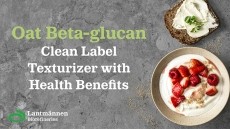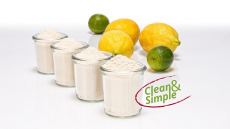Cellulose ingredients make for crispier, healthier fried products
Scientists from TI Food and Nutrition, Spain’s CSIC, and TNO Quality of Life examined the effects of different type of cellulose-based hydrocolloids and found that a specific form of hydroxypropylmethyl cellulose performed best in deep fried products, by reducing the oil content and a more intense crunch.
Writing in Food Hydrocolloids, the researchers note that the results confirmed their hypothesis that “cellulose ether reaching the best balance in terms of lower moisture holding and lower oil uptake would be the most suitable for use in the formulation of deep-fried products where crispness is a key factor for consumer preference”.
While this is not the first time that food scientists have used cellulose derivatives in the batter of fried foods, the researchers state that they have simplified the investigation by using a deep-fried crust model system which controls the thickness of the batter before frying.
Using the cellulose ethers, methyl cellulose and HPMC (supplied by Dow Chemical Company) and carboxy methyl cellulose (CMC, supplied by Akzo Nobel Functional Chemicals) the researchers prepared a range of batters. Different forms of HPMC were used with different ratios of methoxyl to hydroxypropyl substitution.
On exposure to the hot oil of the deep-frying process the hydrocolloids formed gels, except CMC. Both MC and HPMC samples increased the water retention and decreased the uptake in oil by the model food.
“Nowadays, [high oil uptake] is often considered to be a negative aspect of deep-fried products that does not fit with the increasing demand for healthier food with low oil content,” explained the researchers.
The best performance was noted for the HPMC which was characterised as having 22.5 per cent methoxyl substitution and 7.7 per cent hydroxypropyl substitution, said the researchers.
“This confirms our hypothesis as the use of this hydrocolloid resulted in crusts that on fracture emitted sound with a higher intensity than the other cellulose derivatives, except for CMC,” they concluded.
Source: Food Hydrocolloids
Published online ahead of print, doi: 10.1016/j.foodhyd.2010.04.013
“Performance of cellulose derivatives in deep-fried battered snacks: Oil barrier and crispy properties”
Authors: C. Primo-Martin, T. Sanz, D.W. Steringa, A. Salvador, S.M. Fiszman, T. van Vliet























